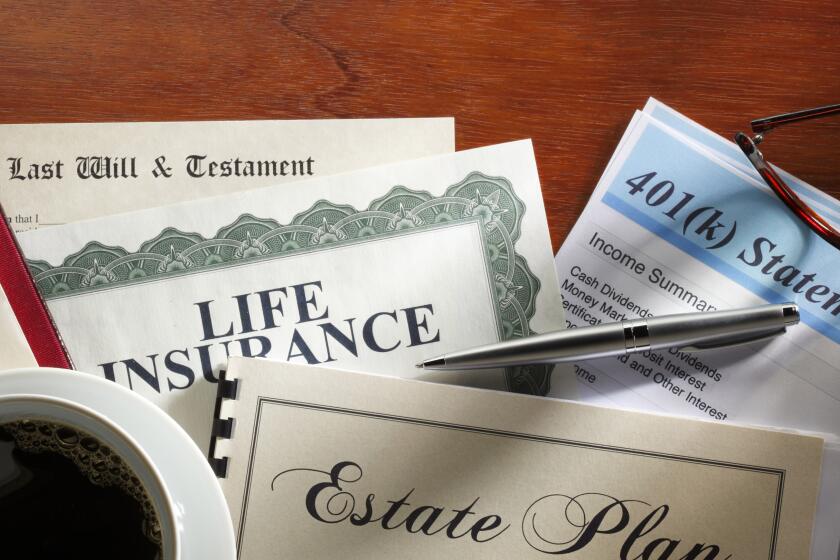More Products Come Under Smog Limits : Environment: The 10 new categories of common consumer items affected range from insecticides to perfumes.
- Share via
SACRAMENTO — In its continuing fight against smog formed by common consumer products, the state Air Resources Board on Thursday enacted pollution limits for 10 more categories, ranging from insecticides to perfume to aerosol non-stick cooking spray.
Over the last two years, the ARB has enacted similar measures for 17 other products, including deodorant, hair spray, room fresheners and glass cleaners. None have taken effect yet. The first compliance deadlines are in 1993.
By the time the last regulations take effect in 1999, all three phases taken together are expected to reduce hydrocarbon pollutants by 60 tons a day, equivalent to the output of 7.5 million 1991-model cars.
The hydrocarbons in consumer products either evaporate, as is the case with perfume, or are sprayed into the air as millions of Californians go about their daily household routines.
Hydrocarbons react with nitrogen oxides in sunlight to produce ozone, a lung irritant that is the main component of urban smog.
California is the smoggiest state in the nation. Several other states, as well as the federal government, however, are considering similar pollution limits on consumer products.
The economic impact of the regulations passed Thursday was difficult to gauge.
ARB staff members said manufacturers would spend anywhere from $13 million to $200 million on reformulating the products, and consumers could see price increases of 1 to 60 cents.
Ralph Engel, president of the Chemical Specialty Manufacturers Assn., said he believes those predictions are “three to four times too low.”
In the past, manufacturers have argued that ARB limits were impossible to reach and would force companies out of the California market.
This time, though, Engel said, “I’m not walking out of here feeling they’re going to ban anything because they’ve left the door open to review categories where we’re having trouble.”
As part of Thursday’s package of rules, the low-smog charcoal lighter fluid now sold in the Los Angeles region will be required throughout the state, starting in 1993. The South Coast Air Quality Management District already has certified 23 products as complying with the limits.
Although perfume, after-shave lotions, colognes and toilet water were regulated, existing brands will be allowed to remain on the market with their current formulas.
That “grandfather clause” was a relief to Thomas J. Donegan Jr., vice president of the Cosmetic, Toiletry and Fragrance Assn. “If you take an existing product that a person has gotten used to and you change the formula, you’re going to have a different scent,” he said.
Most new perfumes and some new colognes will be restricted to 80% smog-forming contents by 1995. The limit falls to 75% in 1999.
Colognes with less fragrance oil, along with most after-shave lotions and toilet waters, will face a 70% limit in 1995, dropping to 65% in 1999.
“These (limits) are designed to be realistic and we think we can do it,” Donegan said.
Manufacturers of some other products affected by Thursday’s rules were less comfortable. Several contended that leaving their merchandise unchanged was a matter of public health.
Insecticide makers said their products would be less effective, leading to the spread of disease.
Non-stick cooking spray makers said their products would be cloudier than versions now on the market, so repulsing consumers that they would return to high-fat butter and margarine to grease their skillets.
The manufacturers of automotive brake and carburetor choke cleaners said their products would be less effective, leading to dirtier cars and resulting in, of all things, air pollution.
ARB staff members said they did not anticipate such problems.
Bonnie Holmes, a consultant to the Sierra Club of California, had different concerns. Holmes wanted the ARB to impose earlier deadlines and to regulate cancer-causing ingredients as well as smog-forming compounds in the products.
She said manufacturers’ worries about rejection in the marketplace are unfounded. “People want safe, non-toxic, environmentally benign products. They’re looking to the companies to put these kinds of products on the shelves.”
Other product categories in the latest group are fabric protectants, rubber cement and epoxies, dusting sprays and laundry spray starch.
Before starting to regulate such household items, the ARB measured emissions from about 2,500 products. With restrictions now set for 27 of those, the ARB projects overall consumer product emissions will be cut 30%.
To reach that goal, a few more products still may face regulation, said ARB Chairwoman Jananne Sharpless.
But the agency’s major focus on consumer products now will shift, Sharpless said, to a study of environmental labeling so that prospective buyers will be more aware of polluting potential.
More to Read
Inside the business of entertainment
The Wide Shot brings you news, analysis and insights on everything from streaming wars to production — and what it all means for the future.
You may occasionally receive promotional content from the Los Angeles Times.










